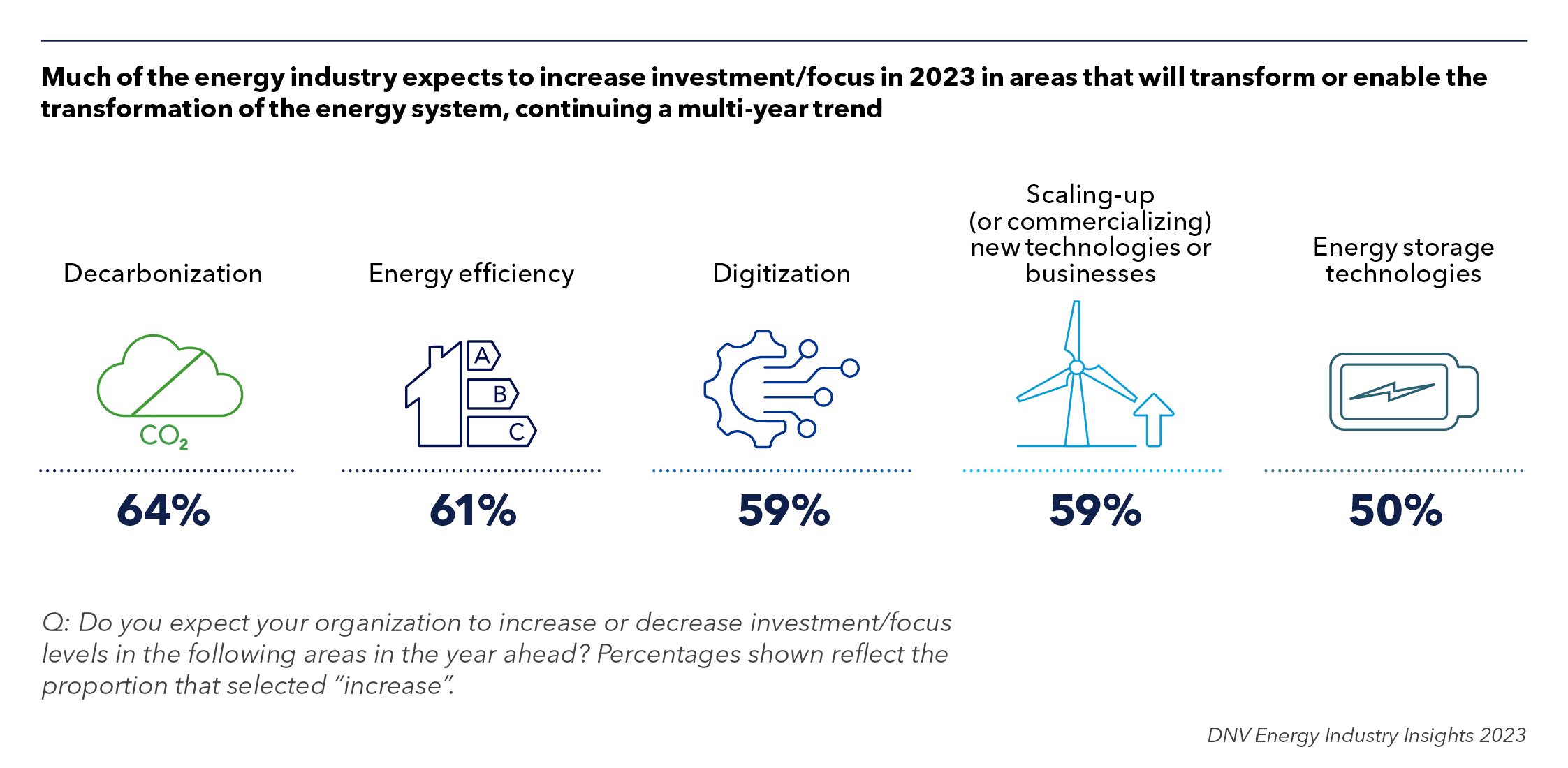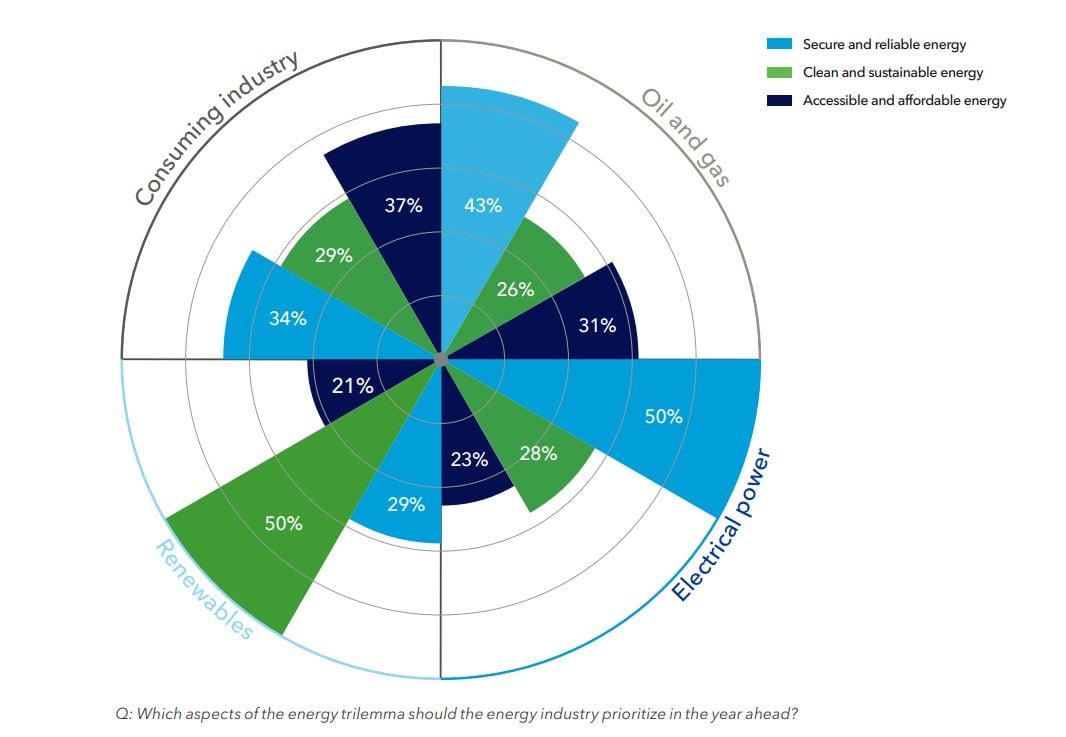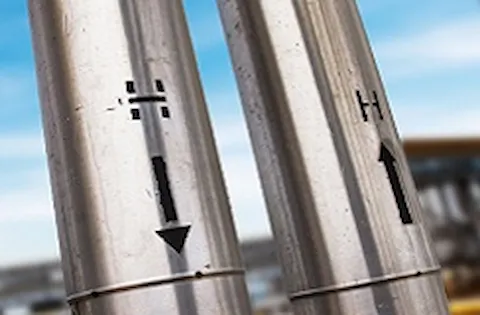Fuelling a secure transition to low-carbon operations
Attention is increasingly being given to decarbonization as the world’s governments and policymakers push to move away from fossil fuels, but the decarbonization market is still riddled with uncertainties and safety issues. This article sheds light on hydrogen as a decarbonization strategy and how software and digital solutions from DNV enable operators and their stakeholders to manage risk and complexity with confidence.
Dealing as they do in carbon-based fossil fuels, decarbonization of energy supply could be seen as an existential threat to the major players in oil and gas, but for the forward-thinking organizations in this sector it also represents a vital opportunity to diversify and reduce their environmental impact. Indeed, most oil majors do already have significant investment in renewable energy sources as well as hydrogen, carbon capture utilization and storage and bio and synthetic LNG.
Also, over 60% of senior oil and gas professionals surveyed by DNV for the 2023 Energy Industry Insights report say their organizations are increasing investment in decarbonization highlighting how the topic is rising on company agendas.

Hydrogen in particular is seen as an ultimate goal as an energy source because of its seemingly clean performance but it is not without issues. The idea of a hydrogen economy is one that has been around for over half a century at least, but it is still in its infancy on a practical level. A true hydrogen economy would see hydrogen used for electric power production distributed over grids, piped hydrogen direct to homes in place of natural gas and hydrogen as a liquid for use in powering vehicles, plant and ships whether in fuel cells or internal combustion engines.
Hydrogen as a reliable energy source
Driven by decarbonization commitments, governments worldwide are showing increasing interest in hydrogen as a clean energy carrier to complement electricity in decarbonizing their energy systems. Priorities and strategies vary by country according to their natural resources for generating power, infrastructure for storing and transporting energy, and economic and social development priorities.
Repurposing existing infrastructure has a key role, with 78% of energy professionals believing this will be key to developing a large-scale hydrogen economy. (Data from Rising to the Challenge of a Hydrogen Economy – survey in 2021.)
With energy security having come to significance over the last two years, nations will likely look to diversify energy sources with hydrogen and hydrogen carrying mediums being added to the likes of natural gas, fossil fuels, hydro-electricity, nuclear and renewables. The oil and gas industry has picked up on this with 43% of the senior Oil and Gas professionals surveyed by DNV ranked "secure and reliable energy" as the aspect of the energy trilemma the industry should prioritize in the year ahead. (Data from DNV’s 2023 Energy Industry Insights report.)

Safety concerns
The European Union's Horizon 2020 program has also identified safety as one of the key challenges in the deployment of hydrogen technologies. The program notes that safety concerns related to hydrogen storage, transportation, and use must be addressed in order to build public acceptance and confidence in the technology.
With regards to safety, hydrogen is highly flammable but because of its low density and rapid dissipation it is less of a fire and explosion risk than many other gases. However, leaks are difficult to detect because it is both colourless and odourless meaning humans can not readily identify leaks. That is unless the gas has been liquified at cryogenic temperatures when an escape could lead to frostbite or death. In an enclosed area an escape of hydrogen could displace oxygen causing asphyxiation. Therefore, any planned use of hydrogen needs modelling to identify consequences and safety risks. Also, safely decentralizing gas systems requires network digitalization and optimization to improve energy security and operational efficiency.
Energy production and use is heavily regulated in most countries, and the lack of experience with hydrogen can impose something of a brake on developing the facilities needed to bring about the hydrogen economy. The resultant level of uncertainty means that operators need to plan for multiple scenarios across the scope of production, transport, storage, and safety. In addition, meeting any regulatory requirements is only half of the battle with end users needing to be convinced of safety, efficiency and performance of hydrogen powered equipment.
Transforming safety systems
Operators seeking to design or operate low-carbon networks are looking to software solutions to help them model events more accurately based on real-life data to help them navigate the uncertainties. However, what separates the chaff from the wheat is how well-equipped the software tools are to represent the different characteristics of these gases accurately.
Unlike other players in the market, DNV continuously invests in domain expertise and strong R&D ensuring that its software tools are reliable. To achieve this requires constant updating reflecting latest scientific research and industry best practices. Not only are its software models validated using learnings from R&D and industry partnerships, but the expertise also translates to innovative bespoke solutions for customers, such as real-time networks and digital twins. This ensures customers are informed, in control and empowered to drive change.
Proven solutions
As an organization, DNV is well entrenched across the value chain, providing it with a unique perspective of the transformation. In partnership with customers, DNV is at the forefront of industry research establishing standards and procedures for operating facilities and pipelines.
For many years, DNV has been able to model the behaviour of a wide range of materials, including hydrogen, ammonia, and carbon dioxide, both for facilities in its consequence modelling and risk modelling software and for pipeline networks in its hydraulic modelling tools. These tools recognize and take account of the different behaviours of different gases and the different operating conditions needed.
And experience shows there is a clear case for proven software solutions that help to demystify the uncertainties and navigate the changes. Ensuring safety and supply security will, in turn, provide 'peace of mind' to oil and gas players seeking to develop and operate their hydrogen infrastructure.
Currently, DNV is putting significant effort into validating and testing its models including testing to prove the safety case for hydrogen at the Spadeadam Testing and Research Centre.
Author: Koheila Molazemi
8/10/2023 12:00:00 PM




